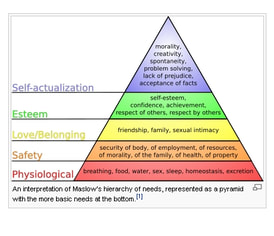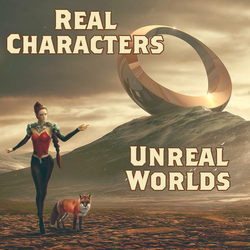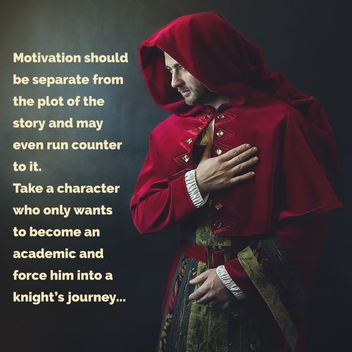|
I finished National Novel Writing Month (whew!) and I'm ready to continue this series... A story can have a vibrant world and a brilliant plot, but it's all for naught if the characters don't act like genuine people (or elves, trolls, whatever, you get it). This blog series is about creating authentic characters who act and react realistically in fantastic and futuristic worlds. Real MotivationTo effectively and convincingly move through a fantastic world, characters need a prime motivation. This motivation should be separate from the story's plot and may even run counter to the narrative. For example, a character who wants to be a knight going on a quest to become a knight is supremely dull. Take a character who only wants to become an academic and force her into a knight's journey; Now we're cooking. I'm not saying that the plot should always run counter to a character's motivation, just that motivation needs to be exciting and can be separate from the plot. When a character is inauthentic, it's often because they either don't have any motivation or act in a way that's counter to an established prime goal. A character who is only about gaining esteem will not disrespect a superior without reason. A homeless character who needs shelter won't turn down a free night in an inn just because he doesn't follow the innkeeper's religion. Motivation as a Hierarchy  One way to choose your character's motivation is to place them on Maslow's Hierarchy of Needs chart. In Maslow's needs, motivation moves through five stages, progressively, so once the character fulfills the requirements on one step, their goals move on to the next. These stages include: The physiological need for food, shelter, sex, and similar physical needs makes up the pyramid's bottom. The next set of requirements is safety and then love and belonging. Next on the pyramid is esteem and respect. Finally, spirituality, creativity, and self-actualization drive top-tier motivations. You can see how powerful these motivations can be in driving your character forward and giving them some personal background and context in your world. For example, a character whose primary motivation is to find food is in a different place in life than someone who is looking for love and family, and both are separate from a character who is searching for spiritual meaning. Moving a character's motivation through Maslow's chart can provide character growth throughout the story arc. Maybe your character starts out as a thief who steals for food and shelter, attempting to meet needs at the base of the pyramid. With some newfound powers, the character gets all their physical and safety needs met and now wants to find love and belonging. (I realize I just gave an outline of Disney's Aladdin, but it still works as a story arc). A Note on Obsession Motivations are compelling, but note they're not obsessions, although an obsession can spur a motivation. A character who wants to find a girlfriend differs from a character who is obsessed with a certain woman. Motivation Development When you write a character, give her a primary motivation. Think about where on Maslow's hierarchy she might land. What needs they already take care of, what still should be fulfilled, and where would she like to go next, whether her journey is physical, professional, or spiritual. You can be general with your motivation; for example, maybe your character just really needs to feel safe or to find love. Or perhaps she has a specific motivation to rule a kingdom or undo a wretched curse. Other Blogs in this Series:
0 Comments
|
Alison Lyke
Categories
All
Archives
November 2022
|



 RSS Feed
RSS Feed
